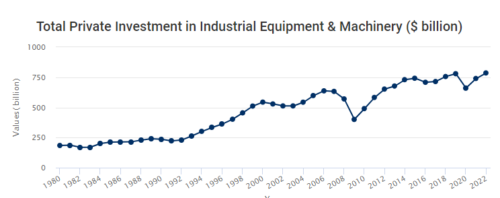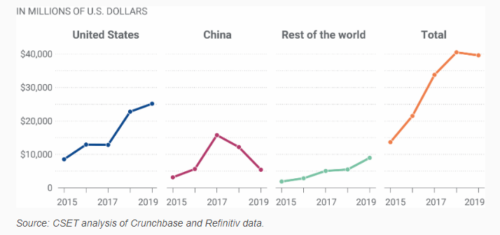

Since the industrial revolution, new technologies have disrupted the labour market. While machines have replaced production line workers, the rise in productivity brought about by new technologies has benefitted other professions like doctors and bankers. This varying effect of technological advancement creates complexity in the economic analysis of the impact of technology on the labour market. The recent COVID-19 pandemic provided an opportunity to further integrate technology into the workplace in radical and innovative ways. Indeed, leading companies like Zoom, Slack and Google continually revolutionise how workers traditionally operate.
Trends in the Labour Market beyond COVID:
The disruptions and unpredictability brought about many changes in the way we work today, and many of them are here to stay.
The pandemic magnified the issue of formal versus informal work. While there is no set definition for informal or precarious labour, these jobs often involve low wages, no benefits, no union coverage and low job tenure. In particular, during the peak of the pandemic, employers in formal organisations often helped facilitate arrangements for working from home and often successfully and systematically transitioned to remote work with little to no downtime and opportunity cost. Meanwhile, workers in informal sectors had no such support. And the employers in these industries are generally irresponsible and inexperienced. Consequently workers often lost their job or had to work in dangerous and stressful conditions without any bonus compensation. To this extent, the pandemic should accelerate the pace of the formalisation of jobs so that workers are better protected from exploitation and are able to reap the benefits of the precariousness of their work whilst maintaining job security.
As our economy returns to a “COVID-normal” state, the demand for flexible working arrangements stays high. The successful implementation of remote work arrangements at many firms has highlighted that with the assistance of emerging technology, working from home is not just feasible but productive and efficient. Employees achieved a better work-life balance and attained a degree of autonomy, leading to improvements in overall mental health and job satisfaction. As a result, young people are more open to the possibility and availability of remote work opportunities, and companies will continue to offer these alternatives in the foreseeable future. A problem with remote work is employers using spyware to track employees’ productivity. Research has suggested that as many as 90% of the firms currently have spyware installed to monitor their employees’ performance, which constitutes a privacy infringement and would need to be explicitly regulated by the government to protect workers’ rights.
The pandemic also accelerated the deployment of AI and automation at work. During the pandemic, many firms increased their investment in research and development in order to reap the benefit of automated work processes, namely cost mitigation and future-proofing. AI technologies are commonly used in warehouses, grocery stores, call centres, and manufacturing plants to reduce workplace density in line with occupational health and safety requirements. The adoption of these technologies would necessitate an up-skilling for some workers to enable them to work in more complex and demanding environments. Although this will eventually lead to increased efficiency and productivity within the economy, in the short run, a spike in unemployment associated with this cause is expected.
The Future Impact of Technology on Labour Markets:
Technology nowadays is no doubt a pivotal component of many people’s lives. At work, new technologies have the potential to help people work more effective or, in some cases, replace them. Global investment in all things technology has risen rapidly since World War II. The effects of such investment are evident in the most mundane though necessary technologies such as agricultural machinery in the US to the flashy AI technology that is the current buzz.


Technology that works in tandem with people (known as labour-augmenting technology) is intuitively a massive asset to workers and employers. There are specific examples of implementing and utilising new technology in production processes that increase productivity. For instance, after Collard-Wexler and De Loecker (2015) inspected the US Steel Industry, they concluded that the Total Factor Productivity in the steel industry increased by 38% between 1963 and 2002.
On the other hand, technology such as automation that looks at replacing workers seems like it would act in direct opposition to positive labour market outcomes. However, the truth is more complex and nuanced than that. Hence, examining specific cases and data is essential before making definitive judgements. While automation may lead to a displacement of workers, the goal of automation is to reduce labour requirements per unit of output produced. However, this will lead to lower production costs, an expansion of the industry, and rising labour demand, hence the theoretical ambiguity of the impact of automation on labour market outcomes. The National Bureau of Economic Research constructed a model that studied the positive and negative effects. They estimated that “one more robot per thousand workers reduces the employment to population ratio by about 0.18-0.34 percentage points and wages by 0.25-0.5 percent.”
Ultimately, at this point, due to the arguably unpredictable nature of technological development, it is fair to say that the impact of technology, especially that which automates repetitive, low-skilled tasks, will have an ambiguous effect on future labour market outcomes. As the true potential of new technologies comes to light, more accurate studies and estimations could potentially reveal/forecast the impact they will have. But until then, few people would know for sure. Not only is the technology important, but factors such as the evolution of legal and regulatory frameworks that safeguard humans will play a critical role in this advancement. Nevertheless, according to the World Trade Organisation, technology in its current state “has led to higher relative demand for skilled workers and a lower relative demand for workers performing routine activities”.
Conclusion:
The dynamic nature of the technology sector makes it difficult to evaluate and predict foreseeable impacts that technology will have on the future labour market outcomes. However, the notion that technological advancement has resulted in a higher demand for skilled workers and lower demand for unskilled workers is uncontroversial. Regulatory bodies and public policymakers will have to continue to pay close attention to the complex interplay between technology and the labour market, preventing drastic inequality caused by the changes in the labour market.
The CAINZ Digest is published by CAINZ, a student society affiliated with the Faculty of Business at the University of Melbourne. Opinions published are not necessarily those of the publishers, printers or editors. CAINZ and the University of Melbourne do not accept any responsibility for the accuracy of information contained in the publication.